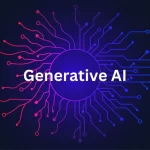
Computational Text Analysis in Genomics: A Guide to Bioinformatics, Gene Expression, and Protein Interactions
July 30, 2025The “genomics era” has transformed biological research, offering an unprecedented opportunity to study all genes in an organism at once. However, this wealth of data has created a new bottleneck: how to interpret and make sense of it all. Computational methods are now being used to analyze the vast body of scientific literature, extracting meaningful insights to overcome this challenge.
This blog post provides a detailed overview of the core concepts of this emerging field, demonstrating how computational text analysis is revolutionizing the field of genomics.
Introducing Text Analysis in Genomics
The sheer volume of biological literature makes manual analysis an impossible task. Bioinformatics, the discipline for handling large biological datasets, has embraced incorporating published, peer-reviewed literature as a critical step. This is a powerful form of text mining, which is invaluable for three key areas: building comprehensive genetic knowledge databases, analyzing experimental genomic data, and identifying new candidate genes for research.
Foundational Concepts in Molecular Biology and Statistics
To effectively apply computational analysis to biological text, it’s essential to have a solid foundation in the basics. This includes a grasp of molecular biology concepts such as DNA, RNA, genes, and proteins, as well as a review of key principles of probability and statistics. This foundational knowledge is then applied to sequence analysis, including sequencing methods, homology, and algorithms like BLAST. It also lays the groundwork for understanding gene expression profiling and the clustering and classification techniques used to analyze this type of data.
From Text to Data: Creating Gene Profiles
A groundbreaking method in this field involves converting unstructured text into a simple numerical format called a “word vector.” These vectors can then be combined to create a “textual profile” for a specific gene, which provides biologically meaningful information that can be used alongside genomic data. This process relies on building a reference index that links genes to scientific documents and using techniques like Latent Semantic Indexing to identify similarities between documents.
Enhancing Sequence Analysis with Text
Integrating textual data can significantly improve the accuracy of sequence analysis. Textual profiles can help identify “remotely homologous genes”—genes that share similar functions despite having only modest sequence similarity. This allows for more comprehensive and accurate analysis. Furthermore, iterative sequence similarity searches can be enhanced with textual information, leading to more accurate homology search results.
Analyzing Gene Expression Experiments
Focusing on the practical application of these methods, a literature-based approach can be used to analyze a single series of gene expression measurements. This involves a scoring method that helps researchers distinguish between “true positives” and “false positives,” allowing them to filter out noise and focus on valuable biological findings. This targeted approach is crucial for making sense of complex experimental data.
Assessing the Coherence of Gene Groups
Computational approaches are used to assess the “functional coherence” of a group of genes. Algorithms have been developed for evaluating the relatedness of genes based on scientific literature, a method that can be used to screen gene expression clusters and understand their collective biological function. This provides a way to validate and interpret the relationships between different genes.
Scaling Up to Large Datasets
These text-based methods can be effectively applied to very large gene expression datasets. Strategies have been developed for assigning keywords to gene groups, screening clusters for functional coherence, and optimizing cluster boundaries in hierarchical clustering. This demonstrates the scalability of these techniques, as they can analyze a massive dataset in minutes, a task that previously took human experts months.
Automated Gene Function Annotation
Text classification is a powerful tool for annotating gene functions, specifically by referencing controlled vocabularies like Gene Ontology (GO). Various machine learning algorithms, such as Naive Bayes and Maximum Entropy, have been used and evaluated for their effectiveness in predicting gene annotations directly from scientific literature. This automates a critical and time-consuming process in genomics research.
The Challenge of Finding Gene Names
A significant hurdle in text mining for genomics is the identification of gene names, which can have multiple synonyms and abbreviations. Sophisticated strategies are used for finding gene names in text, including the use of predefined dictionaries, analysis of word structure and syntax, and contextual clues.
Predicting and Verifying Protein Interactions
Finally, text analysis can be used to predict and verify protein interactions. It has been shown that the co-occurrence of two gene names in scientific literature can be a strong predictor of a potential interaction. Furthermore, advanced information extraction techniques can be used to increase the specificity of interaction identification, providing a powerful new tool for understanding the complex networks of proteins within a cell.

















